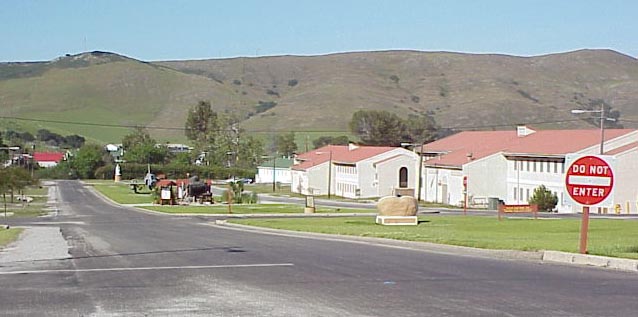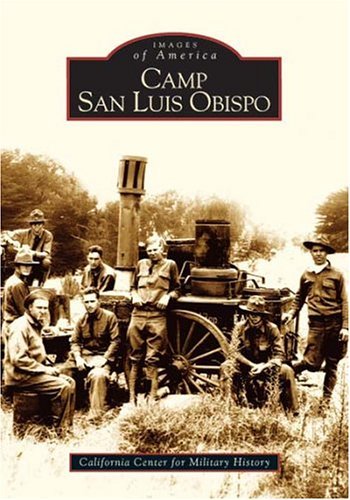The original Camp Merriam was comprised of an area of 5,800 acres, which lies east and north of State Highway 1. At that time, the camp also included approximately 400 acres in that area which were transferred to the State Department of Corrections in 1952. It was devided into two portions, an Artillery Camp, which some buildings still remain, and a larger Infantry Camp which there are no remains of. To view contemprary photographs and postcards of Camp Merriam, CLICK HERE
In 1940, the Federal government exercised its preemptive rights and leased Camp San Luis Obispo from the State. To accommodate the 40th Infantry Division, which then included elements from California, Arizona and Utah, as well as the many infantry divisions which were to follow, the camp was enlarged by 4,685 acres. Title to this acreage was vested in the Department of the Army. In the 1940-1941 period, virtually all construction in the cantonment area took place. in addition, the Army acquired 4,170 acres at the headwaters of the Salinas River, about 20 miles east of Camp San Luis Obispo, for construction of the Salinas Dam as a supplemental source of water for Camp San Luis Obispo. To view World War II era postcards of Camp San Luis Obispo, CLICK HERE
Camp San Luis Obispo was returned to the State of California in 1946. The cantonment area not previously owned by the State including all improvements on both sides of the highway was ceded to the State in lieu of restoration.
Concurrent with the return of the camp to the State in 1946, was the reorganization of the California National Guard. Camp San Luis Obispo became the home of the United States Property and Fiscal Office for California, which provides logistical and fiscal support for the entire California National Guard. For a number of years, the camp was the training site for the 40th and 49th Infantry Divisions, California National Guard, as well as for several non-divisional elements.
Following the outbreak of hostilities in Korea in 1950, mobilization of the 40th Infantry Division and several support units of the California National Guard, the Army again leased Camp San Luis Obispo as a Class I installation. The Southwest Signal Corps Training Center was located at the camp as a Class II activity.
|
The Army returned the camp to State control in July 1965. By this time, the California Military Academy had been established and was growing in size and importance, increasing the demand for adequate training areas. There was also a growing need for additional training areas for support type organizations and units in order to relieve congestion and scheduling problems at Federal training sites.
In recognition of these needs, the Commanding General, State Military Forces, directed that facilities be developed at Camp San Luis Obispo to provide suitable academic complex for the California Military Academy as well as for Sixth U.S. Army sponsored unit training schools. Other facilities were to be upgraded to acceptable standards. Actions designed to achieve these objectives have been in progress since 1967 and are continuing as provided by funding and demand.
 The
cantonment area can house a population of more than 2,000 under
normal conditions, and more than 3,500 under emergency conditions.
The eleven separate dining facilities on the installation have
the capability to feed over 3,000 people. Their are also eleven
assembly buildings with a total occupancy capacity of 1,520,
as well as more than fifty administrative and office buildings.
Additionally, the camp maintains a heliport, a complete complex
of warehouses, workshops and maintenance facilities. Other supporting
facilities include a chapel, two service clubs, two theaters,
as well as laundry and post exchange facilities.
The
cantonment area can house a population of more than 2,000 under
normal conditions, and more than 3,500 under emergency conditions.
The eleven separate dining facilities on the installation have
the capability to feed over 3,000 people. Their are also eleven
assembly buildings with a total occupancy capacity of 1,520,
as well as more than fifty administrative and office buildings.
Additionally, the camp maintains a heliport, a complete complex
of warehouses, workshops and maintenance facilities. Other supporting
facilities include a chapel, two service clubs, two theaters,
as well as laundry and post exchange facilities.









